A Walk Along the Land Walls – Day One
Stretching for six kilometers from the Sea of Marmara to the Golden Horn, the Land Walls of Theodosius II protected Constantinople from invaders for over a thousand years… until the arrival of the Ottomans and their giant cannons in 1453. The walls have survived largely intact to the present day, and walking along them is an exciting way to see a different side of Istanbul.

We started at the Marble Tower, marking the southern end of the walls at the Sea of Marmara. The tower provides a good idea of what to expect from the rest of the fortifications: impressive despite the ruinous state, and able to be climbed… although the piles of trash and human poop should discourage comprehensive exploration. The walls, with their towers and protected nooks and crannies, make attractive shelters for vagrants; they’re fine during the day, but we kept away from dark corners and would suggest avoiding the walls entirely after dusk.
From the Marble Tower, we crossed the busy Kennedy Highway to begin our journey north. Throughout the day, we’d have to cross a number of roads, and would switch from walking either inside or outside of the walls, depending upon where the most accessible sidewalk happened to be. Occasionally, the easiest path was on top of the walls themselves.
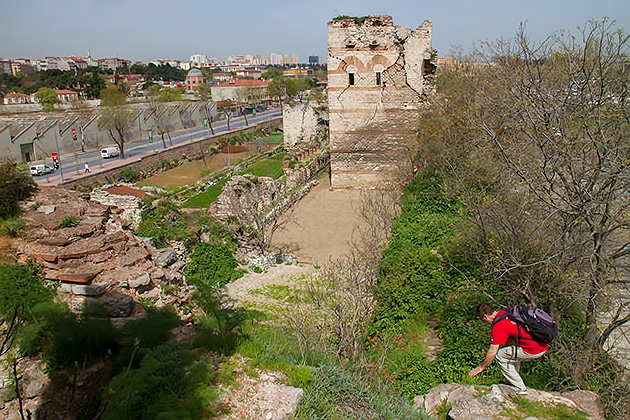
The Walls of Theodosius II were originally constructed in 417, but destroyed 40 years later by a massive earthquake. Bad timing, since Attila the Hun was marching towards Constantinople at that very moment. In a panic, the city recruited everyone to assist in the rebuilding effort, and new fortifications were ready within two months. These new walls consisted of three separate layers and 96 towers and were unbreachable by 5th century military technology. Attila didn’t even try.
We had an incredible time walking along the walls, especially in the sections where we could clamber up to the top and gain a view over the city. There was plenty to see along the way. The old neighborhood of Yedikule, parks, mosques, ancient gates like the Belgrade Kapı, and museums.
West of the wall’s Silivri Gate, we found a path leading through a cemetery to the Zoodochos Pege, an old Orthodox Church that harbors a sacred spring. After exploring the courtyard, we followed marble stairs into the basement where the spring is found, complete with fish swimming around in the holy water. According to legend, a monk was frying fish in a pan, when he was told that the Turks had breached the nearby walls. Disbelieving, the monk scoffed that this was “as likely as the fish in my pan returning to life”. Which they promptly did, jumping from his pan into the spring where they remain to this day. To the Turks, the Zoodochos Pege is known as the Church of the Fish (Balıklı Kilise).
At six kilometers in length, it’s easy to walk along the entire length of the walls in a single day, but by the time we’d reached the halfway point at the Topkapı tram stop, we were exhausted, and decided to save the second half for another time.
Locations on our Istanbul Map: Marble Tower | Belgrade Gate | Zoodochos Pege
–Apartments For Your Entire Family In Istanbul
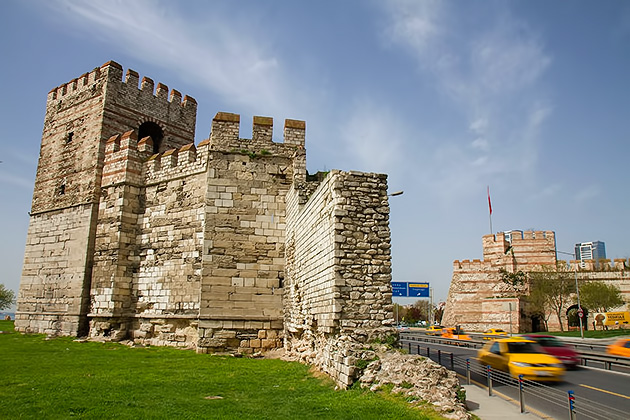
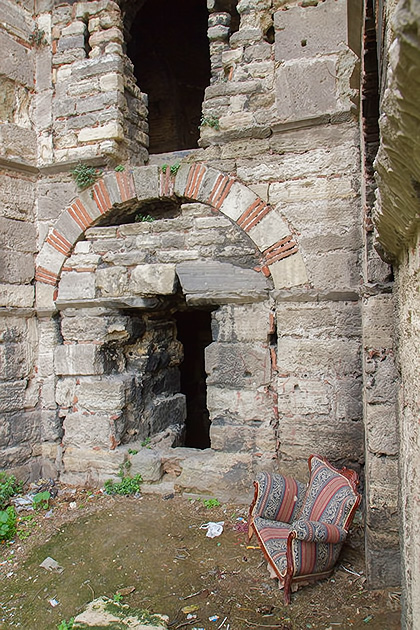
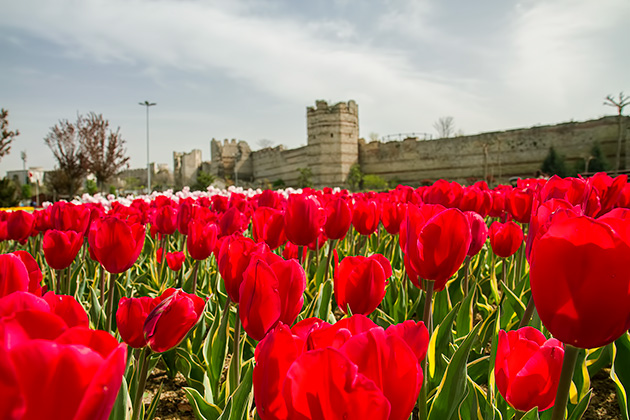

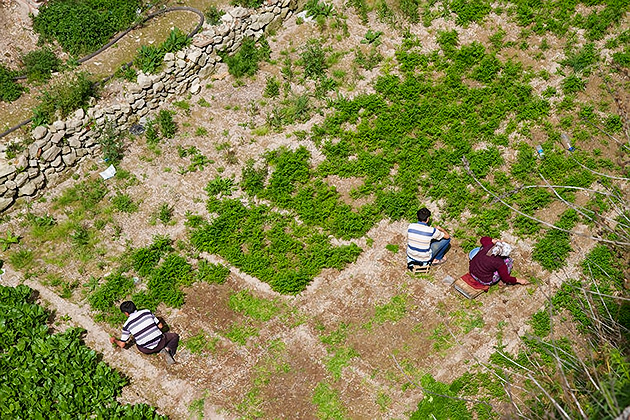

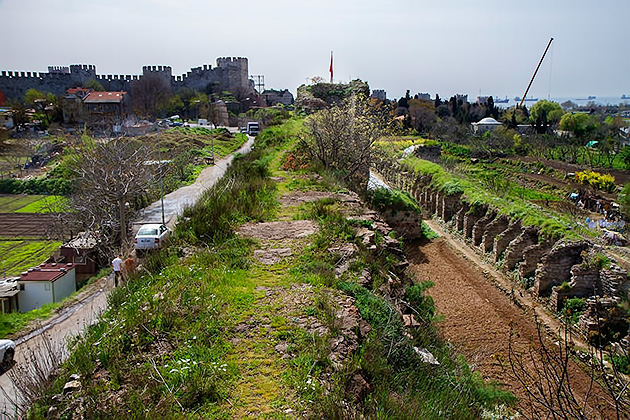

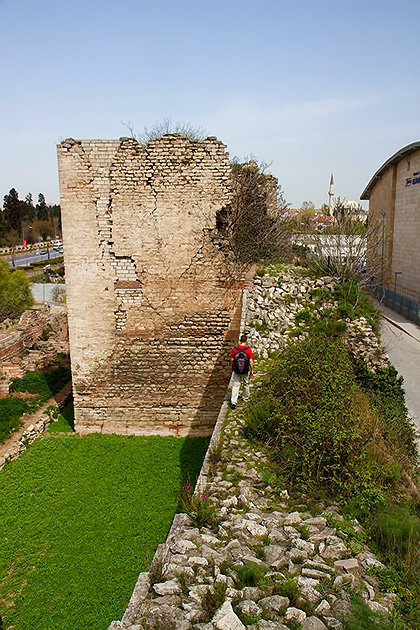


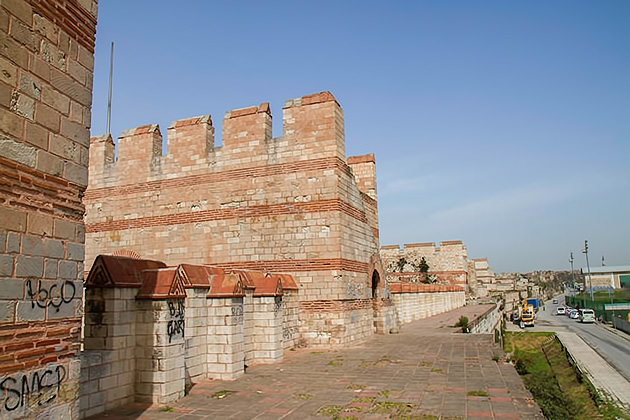

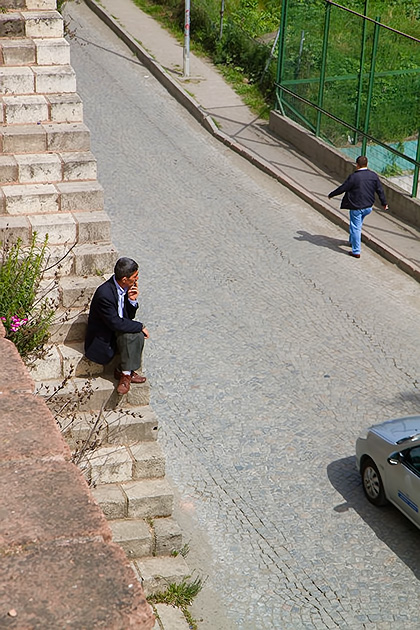
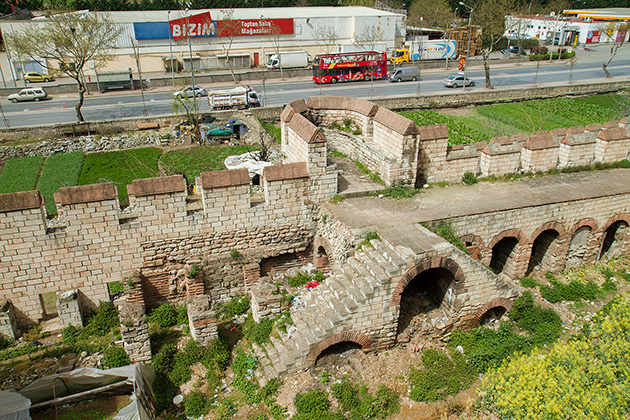

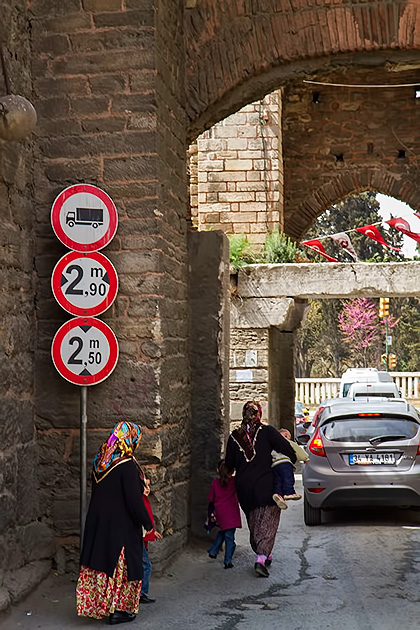

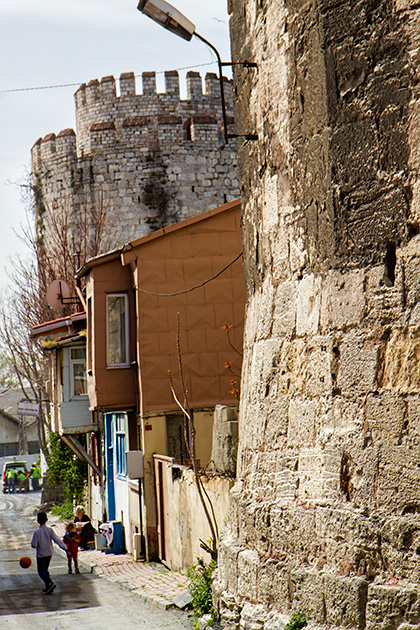
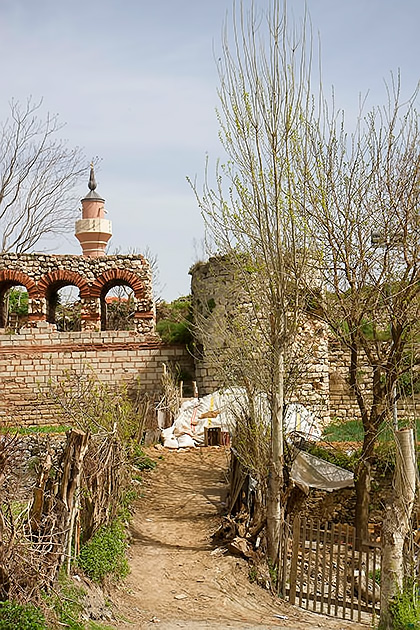

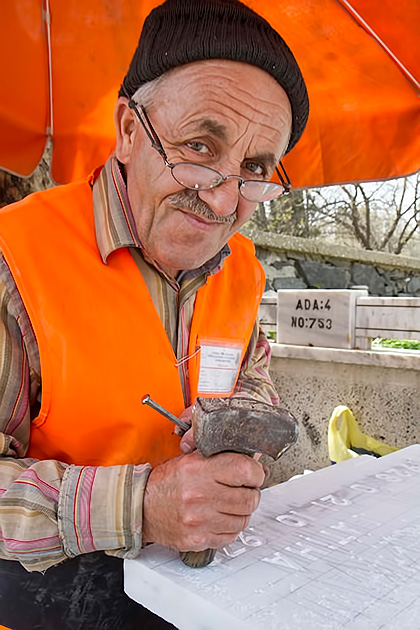
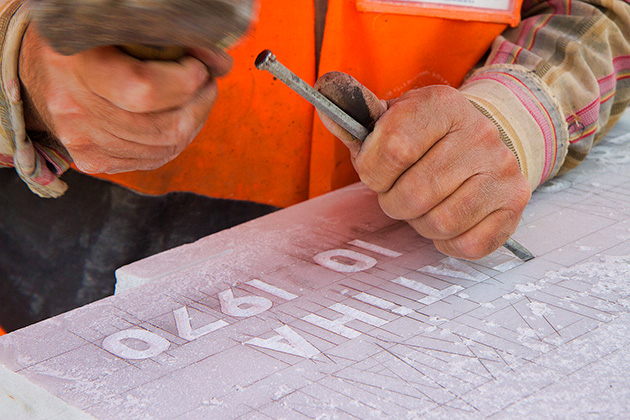


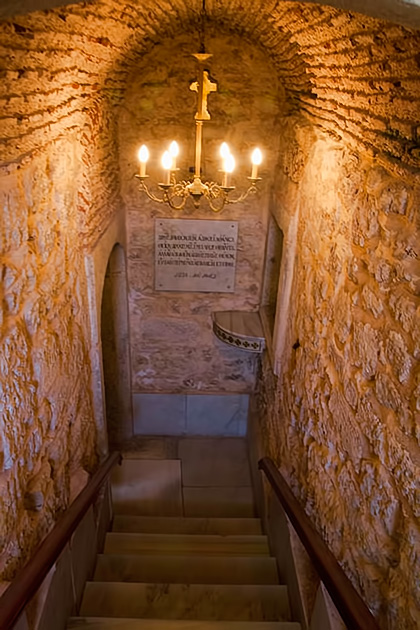

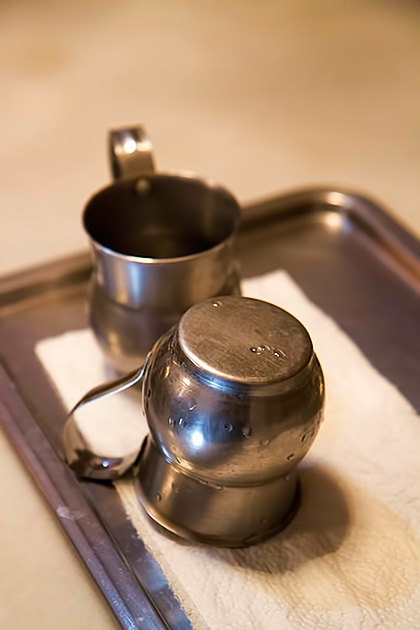
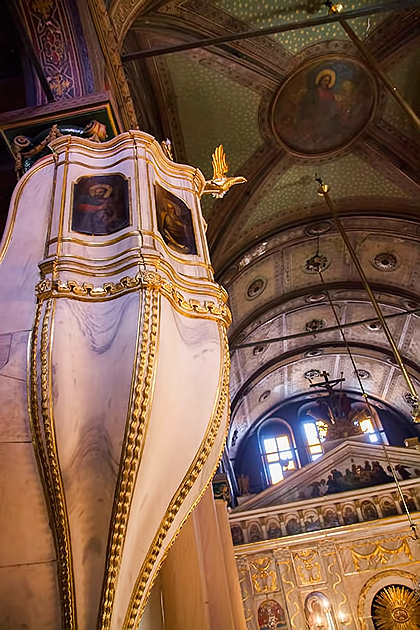


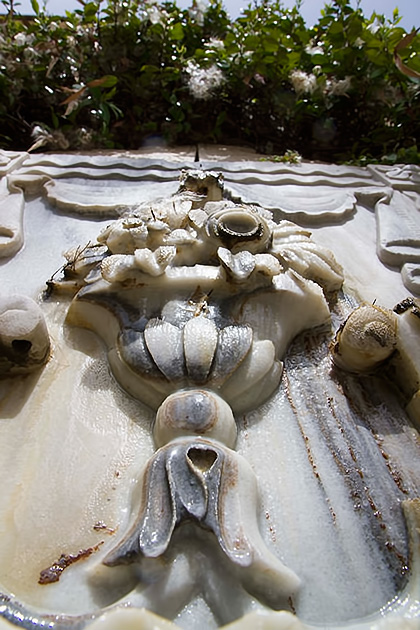


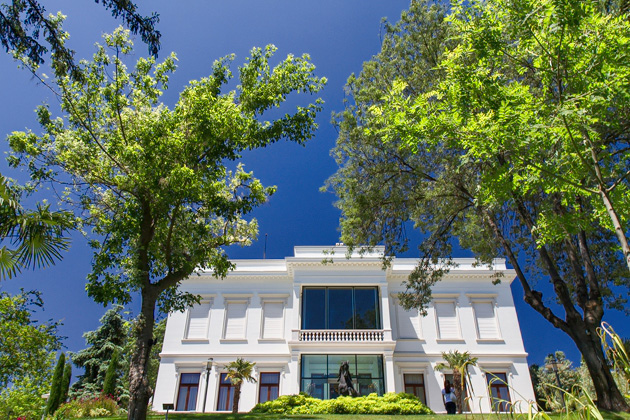
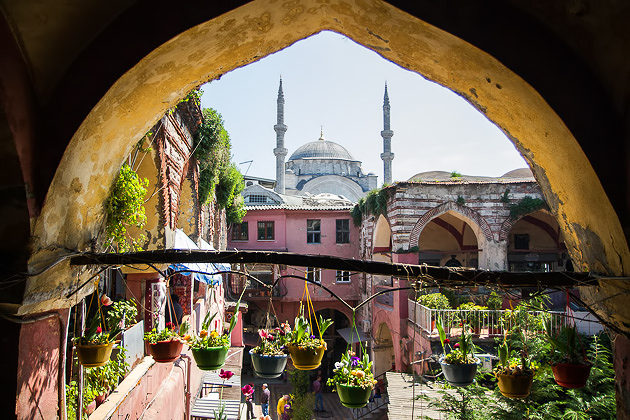
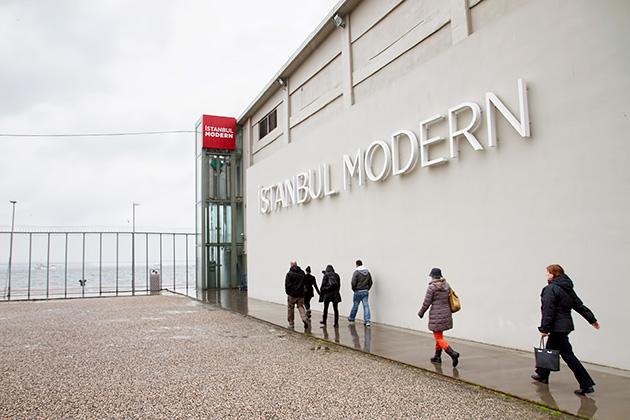
Hi – lovely photos, and interesting blog. Just one thing, you say: “the Land Walls of Theodosius II kept Constantinople safe from invaders
for over a thousand years… until the arrival of the Ottomans and their
giant cannons in 1453” – not quite. Constantinople was sacked in 1204, during the Fourth Crusade, when the Greek emperor was booted out by Latin invaders. The Latin kingdom lasted for about 60 years, when the city was reconquered by the Greeks.
You’re right: the Crusaders did manage to breach the walls and sack the city. I’ve added a caveat (“mostly safe”) to the text… thanks.
Pingback: The Panorama 1453 History Museum | For 91 Days in Istanbul – Travel Blog
Pingback: The Land Walls – Day Two | For 91 Days in Istanbul – Travel Blog
Did you feel safe in the neighborhoods along the walls. We were there in 1992 and I wondered if this was really a safe place to be it seemed very iffy. Also I’m going there this year and someone from Istanbul said the city is very safe we just don’t walk around the Theodosian walls.